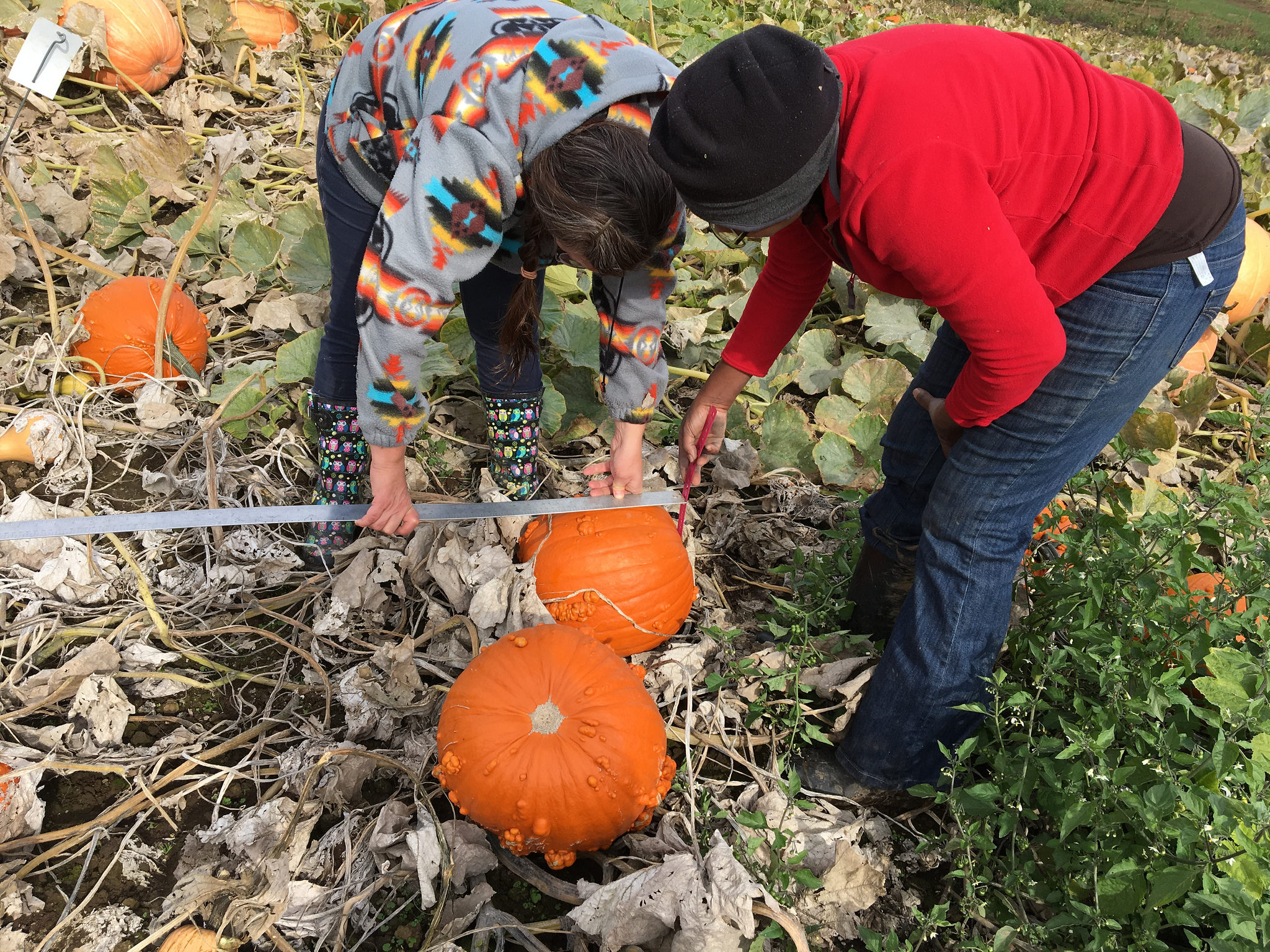A new publication on some the best vegetable varieties for western Oregon gardens has been released by Oregon State University Extension Service.
Vegetable Variety Trials 2017, co-authored by Brooke Edmunds, Shinji Kawai and James Myers, is the resurrection of a popular series that went on hiatus in 2011.
“People really looked forward to making good decisions on what varieties will grow well in our area,” said Edmunds, a horticulturist with Extension. “We’re excited to bring it back and think gardeners will be, too.”
For the first time, a group of OSU Extension Master Gardener volunteers assisted with research for the project. They spent the 2017 season evaluating plots of cabbage, peppers, pumpkins, ornamental gourds, winter squash and tomatoes at the OSU Vegetable Research Farm in Linn County. It was a chance, Edmunds said, to both appraise the vegetables and give Master Gardeners the opportunity to get behind-the-scenes experience at trialing varieties.
The participants took into account the size, shape and uniformity of the vegetables, size of the plant, how long it takes for the varieties to ripen, yield, disease and pest susceptibility, and, of course, taste.
Plants, especially peppers, were also evaluated for how fragile they are to determine if they need to be staked. Master Gardeners also concentrated on the size of pumpkins and gourds vines.
“Some are extremely big plants,” Edmunds said. “If you have a small garden, you wouldn’t be able to have much except a pumpkin patch.”
Master Gardeners walked the rows multiple times measuring, doing visual checks and marking their forms. During harvest, they visited the field weekly to keep up with their observations.
“We wanted to know how would the plant look in our gardens, do we want to eat it, do we want it on a BLT? Everyone had their favorites; it was interesting to get different viewpoints.” Edmunds said.
Myers, a vegetable breeder in the Department of Horticulture, chose the varieties.
“We select varieties to get a wide range of materials that show the range of variation within a crop while at the same time obtaining newer releases that may be of interest to home gardeners as well as market farmers,” he said.
The publication lists sources for seed of evaluated vegetables and many are available as starts at Oregon nurseries. For instance, Big Beef, Oregon Spring and Big Brandy tomatoes, all of which scored a 7 out of 9 in overall ranking (the highest markings for tomatoes), should be fairly easy to find. In other categories, some varieties received a 9, including Integro and Caraflex cabbage and Bella Italia and Carmen peppers.
Charts organize varieties into categories to make navigating the information easier. In addition to obvious information, the publication also lists observations on additional characteristics like color and flesh and skin thickness. Comments are included for each variety. For Carmen pepper, evaluators wrote “Great flavor: sweet with juicy texture. Blossom end rot noted.”
“Not only will the publication give gardeners tips on which varieties to choose,” Edmunds said, “it will also be fun for them to see how their personal favorites did.”

